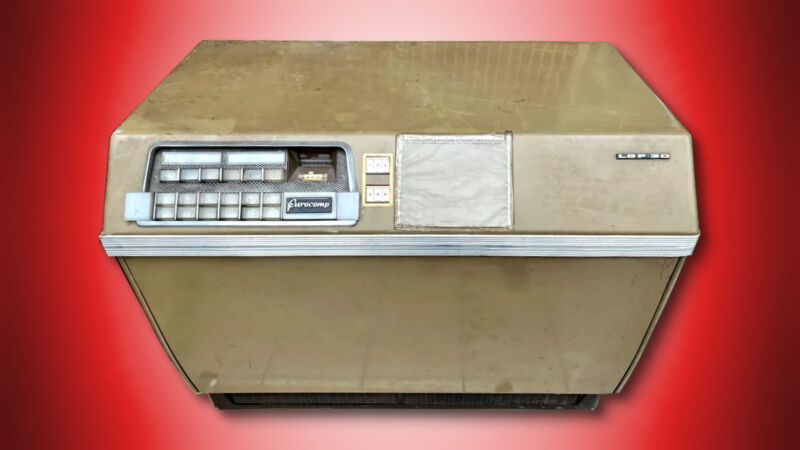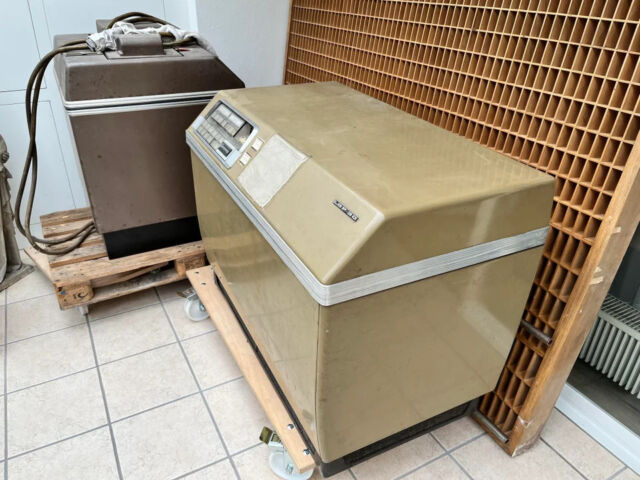
announced that they had found a very rare 66-year-old Librascope LGP-30 computer (and several 1970 DEC PDP-8/e computers) in their grandparents’ basement. The LGP-30, first released in 1956, is one of only 45 manufactured in Europe and may be best known as the computer used by “Mel” in a famous piece of hacker lore.
Developed by Stan Frankel at California Institute of Technology in 1954, the LGP-30 (short for “Librascope General Purpose 30”) originally retailed for $47,000 (about $512,866 today, adjusted for inflation) and weighed in at 800 pounds. Even so, people considered it a small computer at the time due to its desk-like size (about 44×33×26 inches). According to Masswerk.at, the LGP-30 included 113 vacuum tubes, 1,450 solid-state diodes, and rotating magnetic drum memory—a 6.5-inch-diameter and 7-inch-long tube rotating at 3,700 RPM—that could store 4,069 31-bit words (equivalent to about 15.8 modern kilobytes).
Along with the main LGP-30 unit, c-wizz found a Flexowriter typewriter-style console (used for input and output with the machine) and what looks like a paper tape reader for external data storage. A few PDP-8/e machines and some related equipment lurked nearby. “There seem to be more modules belonging to the PDP/8E’s as well,” c-wizz wrote in a Reddit comment. “There is a whole 19-inch rack where all of this is supposed to be mounted in. Maybe I can find some manuals and try to put it all together.”

Although the PDP-8/e machines are rare and valuable on their own, the LGP-30 arguably stands out as the most interesting part of the basement discovery because it’s part of hacker legend. In the epic “The Story of Mel,” first posted to a Usenet newsgroup in 1983, a Librascope programmer named Melvin Kaye has been tasked with porting a Blackjack program from the LGP-30 to another computer. The story’s author, Ed Nather, is later tasked with finding a bug in the software, and along the way, he discovers Kaye’s ingenious and unconventional programming tricks. Also, Edward Lorenz reportedly developed chaos theory (and the “butterfly effect”) as a result of weather experiments conducted on the LGP-30.
wrote, “The only thing I know is that my grandfather used it for some civil engineering calculations in the 60s and that he was one of only a handful of people in the country that privately owned such a computer.”
Whatever the grandparent used the LGP-30 for, it appears there might be a relationship between it and the PDP-8/e units found nearby. In another comment, c-wizz wrote, “There seem to be some instructions on how to transfer code written for the LGP-30 to the PDP8e.”
After sitting in a basement for decades, the LGP-30 will likely need significant work to get running again. That’s where a qualified computer museum might come in, and c-wizz appears to be looking into it. “It would truly be awesome if someone can get this thing operational again,” c-wizz wrote. “I found a museum in Germany (where I’m from) that apparently has a working LGP-30. I think I’ll reach out to them.”






